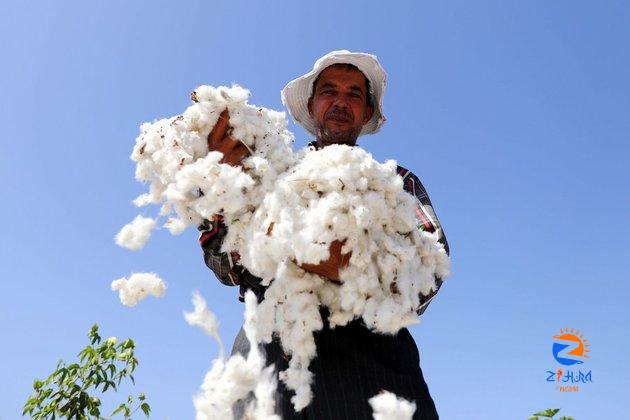
[ad_1]

With the government’s effort to promote the textile industry, Egypt’s cotton prices have jumped to a record in 2021, nearly doubled compared to the previous year.
by Marwa Yahya
KAFR EL-SHEIKH, Egypt, Sept. 23 (Xinhua) — Cotton prices in Egypt have jumped to a record in 2021, nearly doubled compared to the previous year as the government is keen to promote the textile industry, by expanding the cultivated areas and improving the quality of seeds.
“This is the best season of cotton production for the Egyptian farmer,” said Hisham Mosad, manager of state-run Cotton Research Institute.
According to official statistics, the price of a qantar of cotton (45 kg of lint cotton) has surged by more than 70 percent to 3,900 Egyptian pounds (nearly 248 U.S. dollars) compared to 114.5 dollars last year.
“The Egyptian cotton will restore its place and constitute a large part of the country’s national economy,” Mosad told Xinhua while watching the harvest of the long-staple cotton starting on Tuesday.

Mosad attributed the rise in cotton prices to the new marketing system that depended on holding auctions across the country periodically and the government’s new approach of selling cotton this season.
“The country has a tendency to advance the textile production, and the agriculture ministry has been working on improving seed quality,” he said.
The cotton planting area in Egypt in 2021 amounts to 236,000 feddans (991,200,877 square meters), compared to 183,000 feddans (768,600,680 square meters) in 2020, Mosad said, predicting that cotton will represent a big share in the types map of plantation across the country in the coming few years.

So far, some twenty countries have signed contracts with Egypt to import Egyptian cotton, he said, naming India, Pakistan, the U.S., China, some EU countries, and Japan as the top importers of Egyptian cotton.
“We also opened new markets in England, Portugal and Canada. Revenues from cotton are hiking,” Mosad added.
Egypt exports the majority of its long-staple cotton and imports three million qantars of short-staple cotton that is originally used in local textile production, according to official statistics.
However, under the government’s new strategy for 2025, 60 percent of the cotton production will be used in local industries, while Egypt used to export 80 percent of its production, Mosad said.
Magdy al-Souraky, head of the Assembly General for Land Reclamation Association in Cairo, said that “I am glad that Egyptian cotton will restore its glory among the world markets.”
“The farmers’ high income from selling the cotton this year was not surprising,” he said, adding that owing to the harvested cotton’s high specifications, the Egyptian and foreign companies offered high prices in the auctions.

However, he argued that the traditional process of cotton picking is one of the challenges facing the Egyptian farmers. “We still collect the cotton by hand while the world is moving to the machine harvest,” al-Souraky said.
[ad_2]